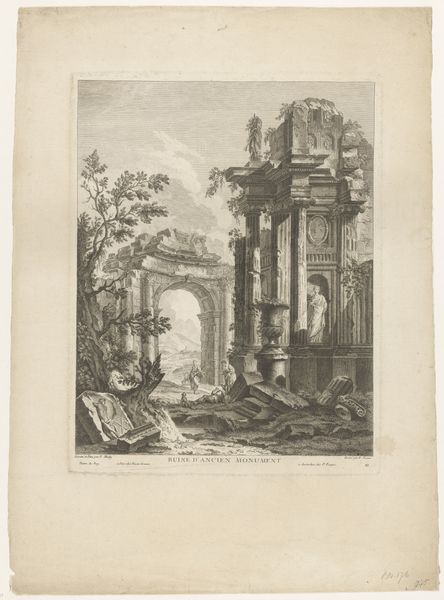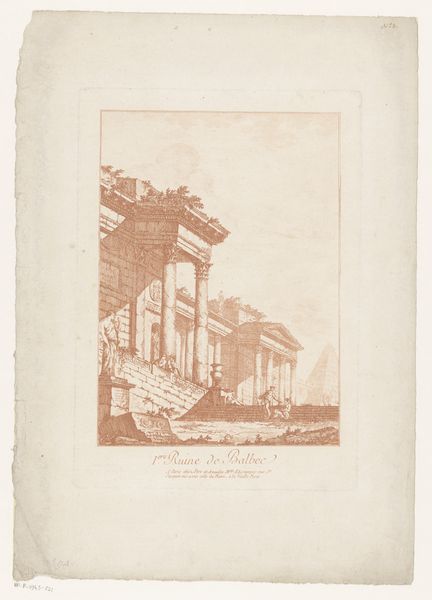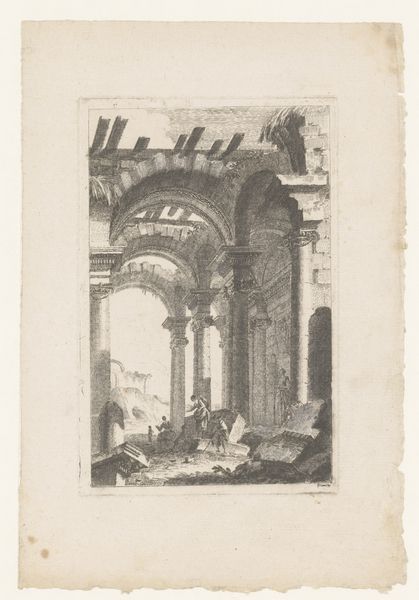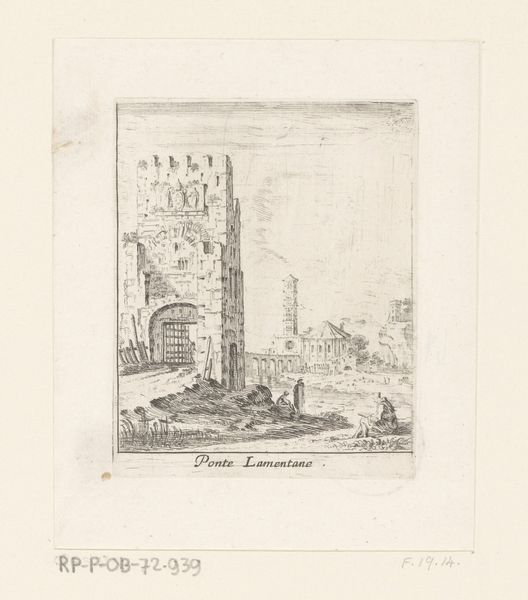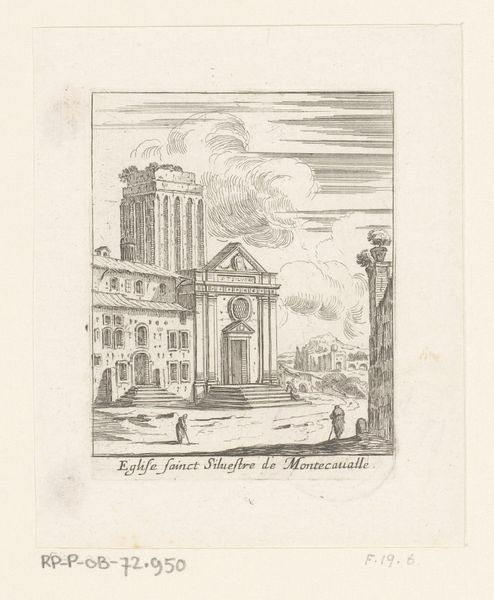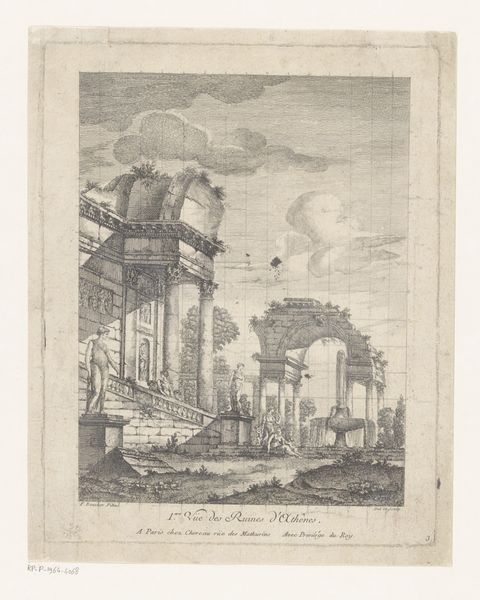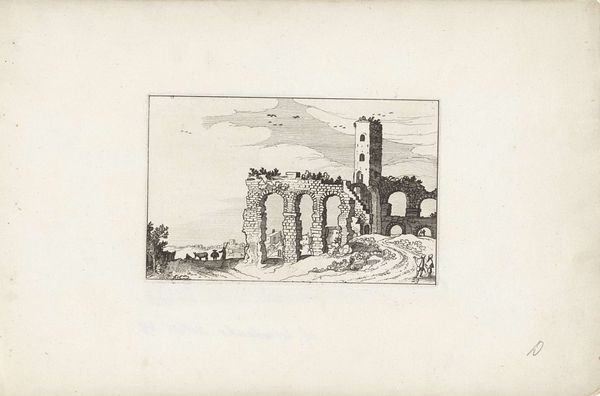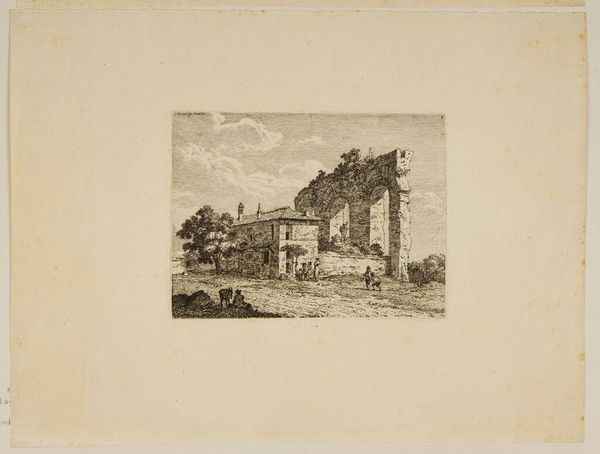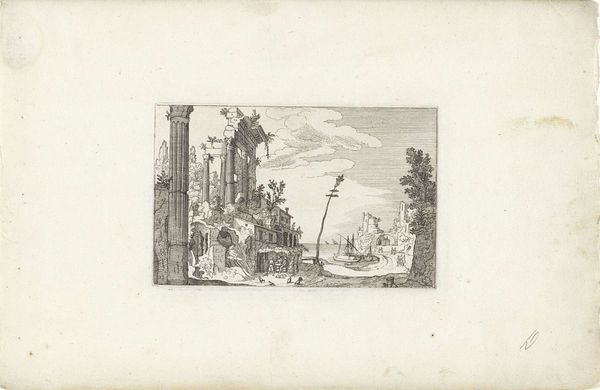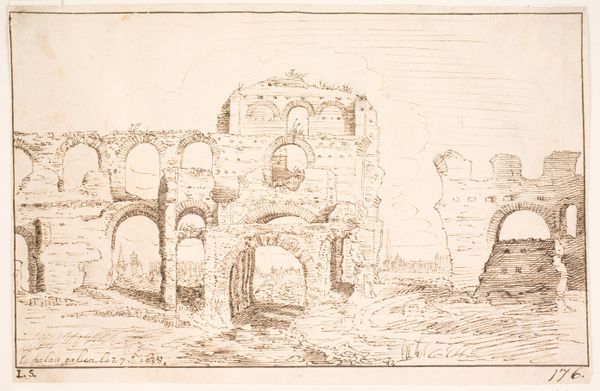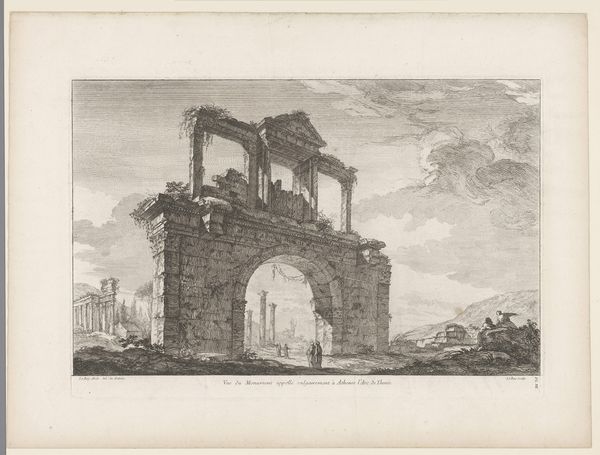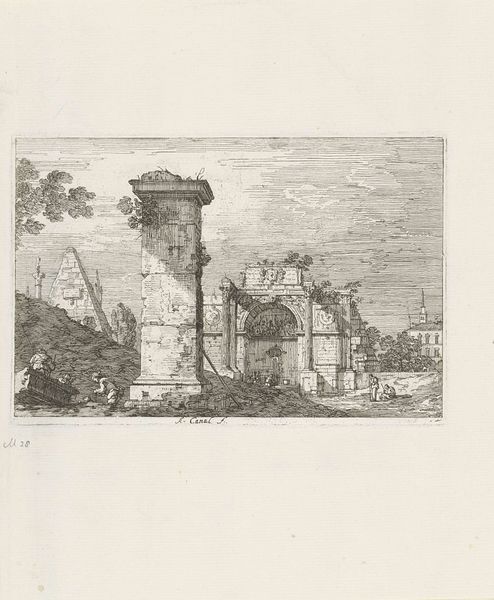
Gezicht op een ruïne met figuren op een trap en bij een balustrade 1772 - 1779
0:00
0:00
justenathanboucher
Rijksmuseum
print, etching, architecture
#
neoclacissism
# print
#
etching
#
landscape
#
classical-realism
#
history-painting
#
architecture
Dimensions: height 288 mm, width 205 mm
Copyright: Rijks Museum: Open Domain
Curator: Let’s take a look at this print, “Gezicht op een ruïne met figuren op een trap en bij een balustrade,” which translates to “View of a ruin with figures on a staircase and at a balustrade.” It’s an etching by Juste Nathan Boucher, made sometime between 1772 and 1779, currently residing here at the Rijksmuseum. Editor: The ruin dominates the image with its crumbling yet majestic architecture rendered in warm sepia tones. The figures in the foreground feel quite small compared to the ruin; they almost disappear against the monumentality of the site. Curator: Boucher was working in a time captivated by Neoclassicism. This piece participates in that trend, fueled by discoveries at Pompeii and Herculaneum, as it allowed Europeans to ponder their connection to the Ancient world and the grand narratives associated with it. The view serves as a stark reflection of power, time, and mortality. Editor: And considering the cultural moment when this was created, what statement could Boucher be trying to make about structures of power? Here we have architecture—intended as a symbol of strength and permanence—crumbling before our very eyes. Then we must account for who this work may have served during its original viewing. Curator: It’s intriguing to think about how Boucher is portraying these ruins. He wasn’t just interested in the structure; he paid careful attention to the social history they evoke. The very idea of the ruin was politically charged, embodying shifts in power, lost empires, and maybe even serving as an ominous prophecy. It raises so many questions about who gets to write history and what legacy truly means. Editor: Absolutely. There’s a definite air of romanticism to the work as well, inviting viewers to consider what existed prior and those lost experiences of the now deteriorated location. Beyond the aesthetic, though, it challenges the presumed stability of social order, asking if even the most imposing structures are ultimately ephemeral. Curator: By combining artistic license with archaeological reference, he gave his viewers not just a depiction of a location, but a visual argument. This etching continues to prompt us to examine not just art’s history but the history held within it. Editor: It all comes together as a silent, potent challenge. Thanks for unraveling those historical layers.
Comments
No comments
Be the first to comment and join the conversation on the ultimate creative platform.
